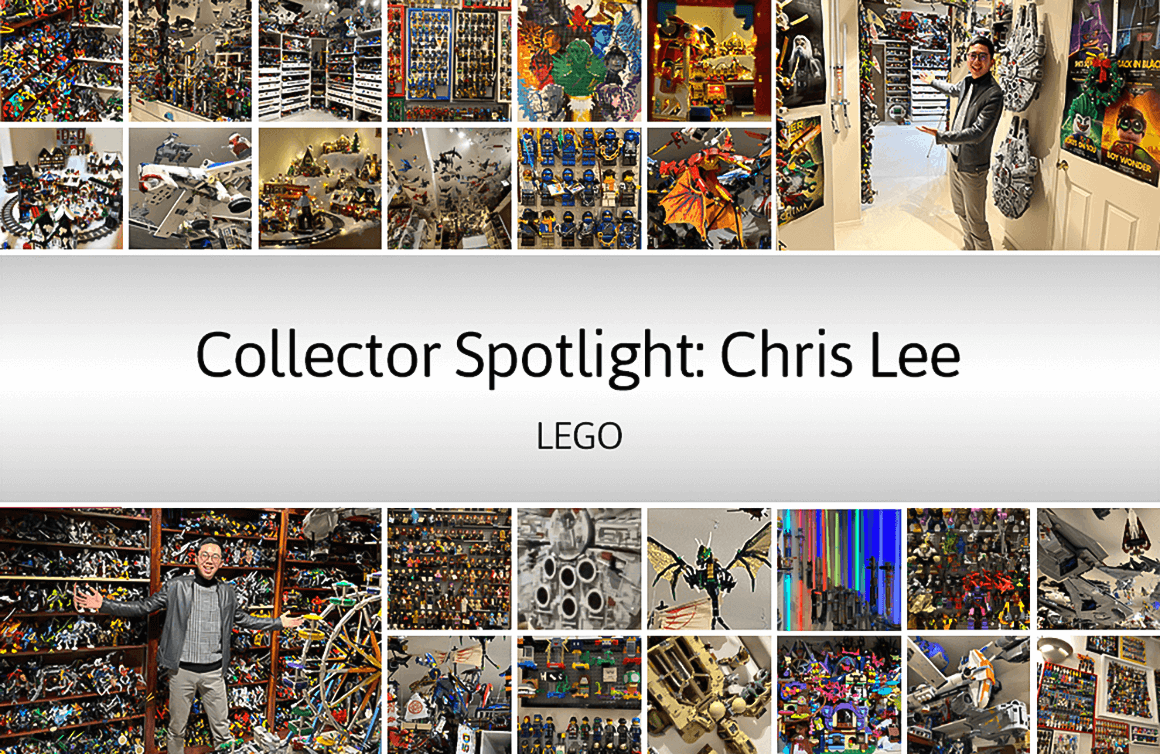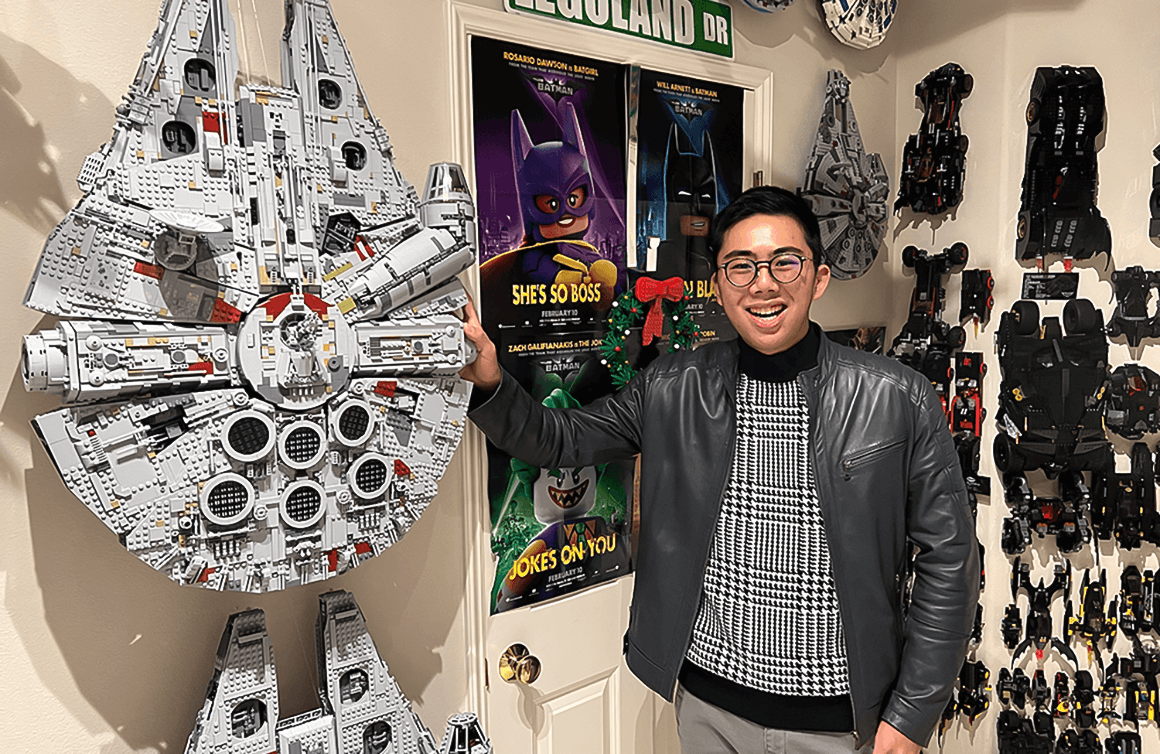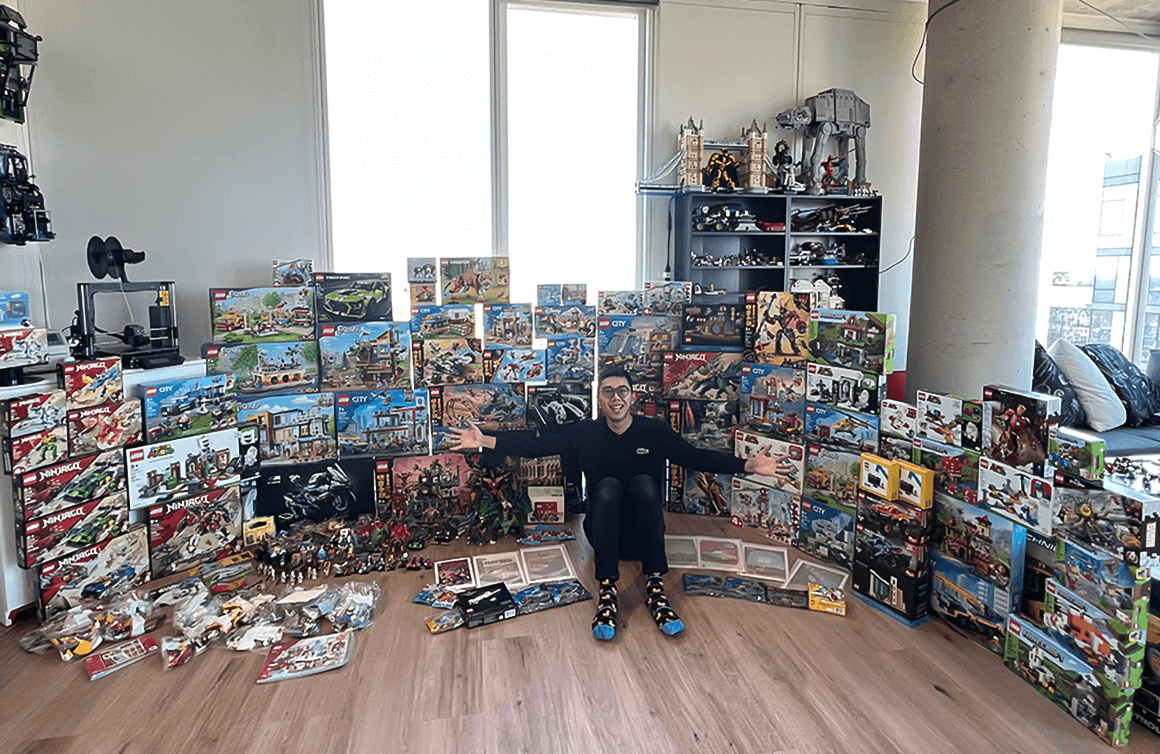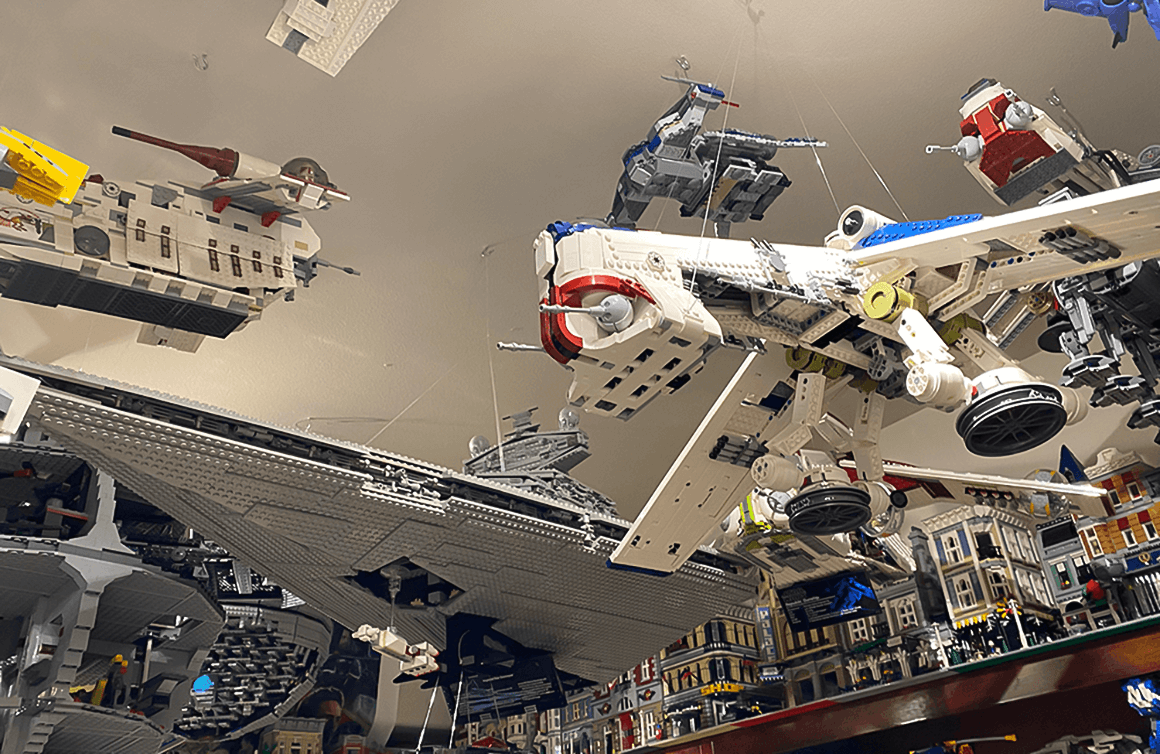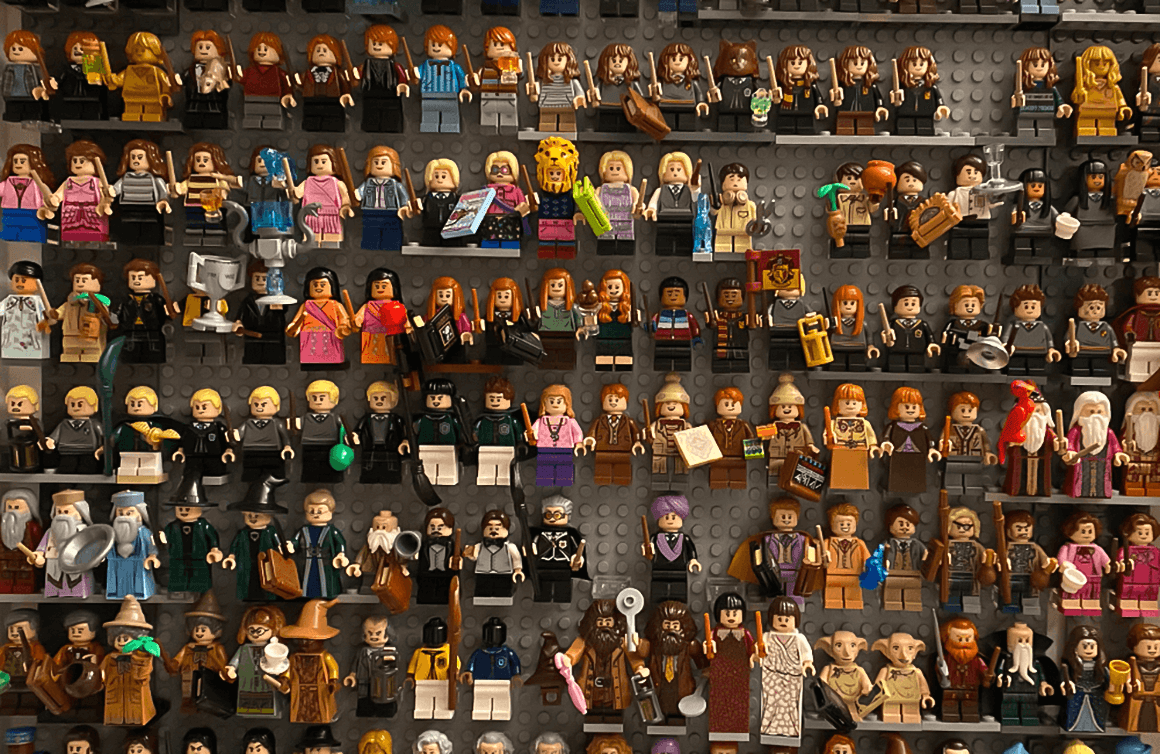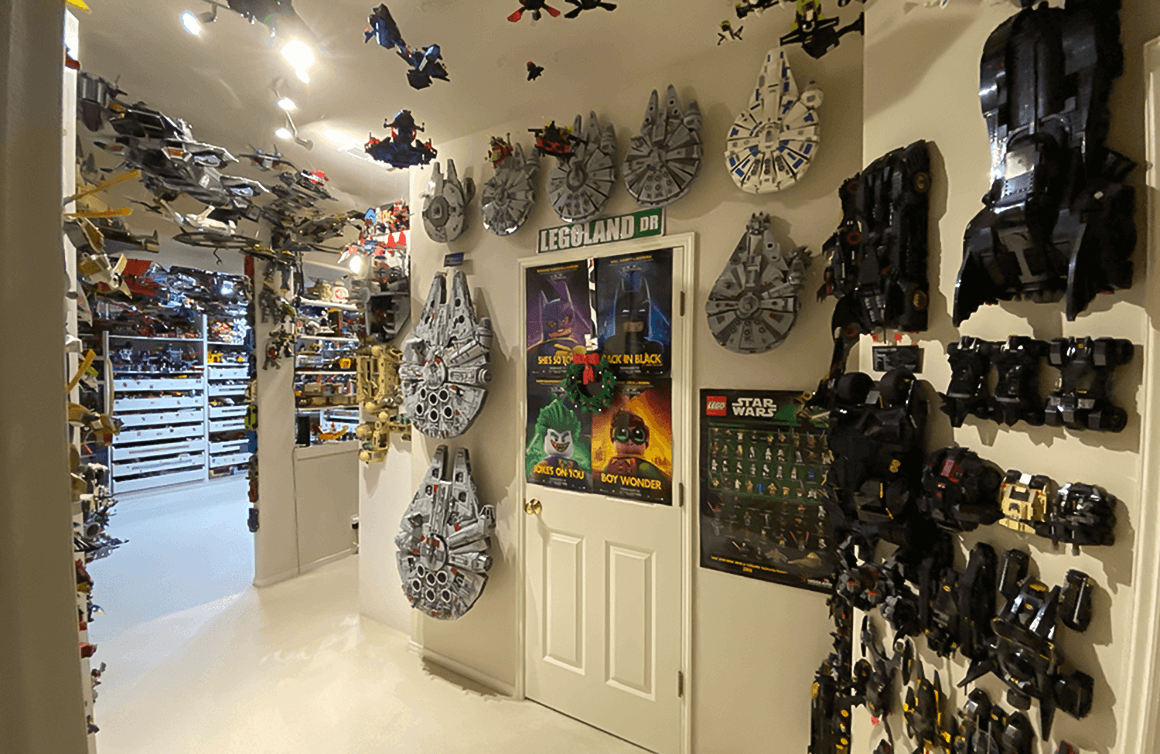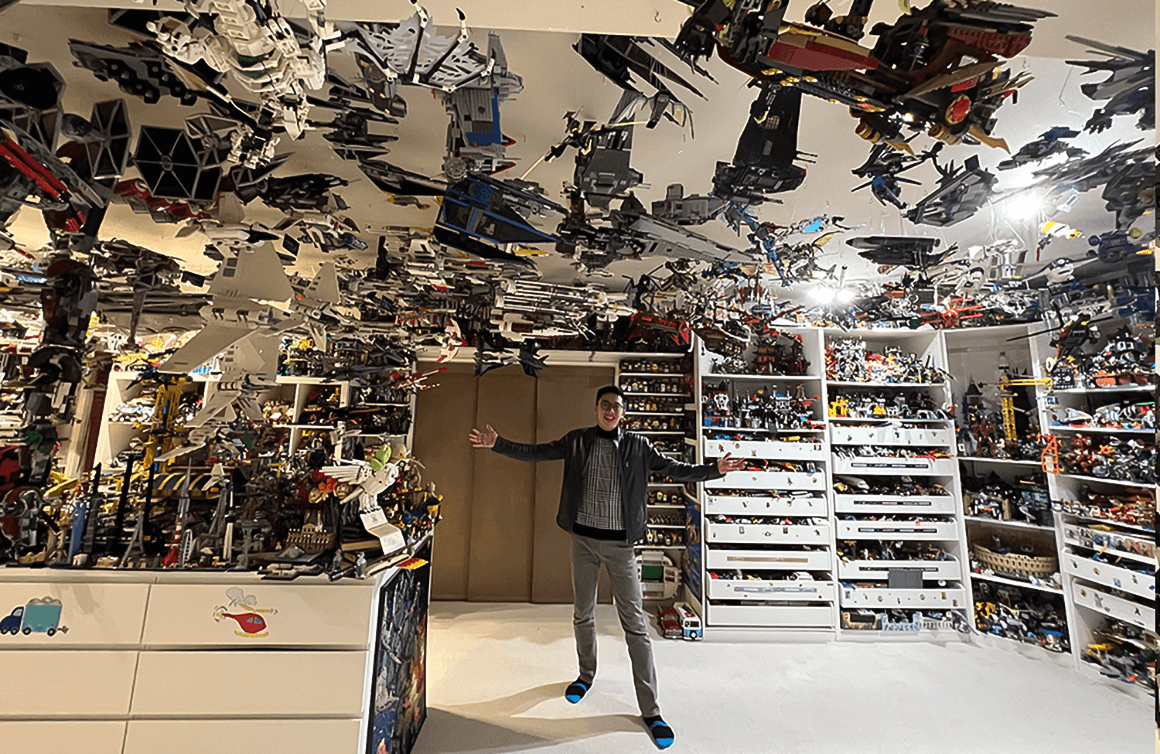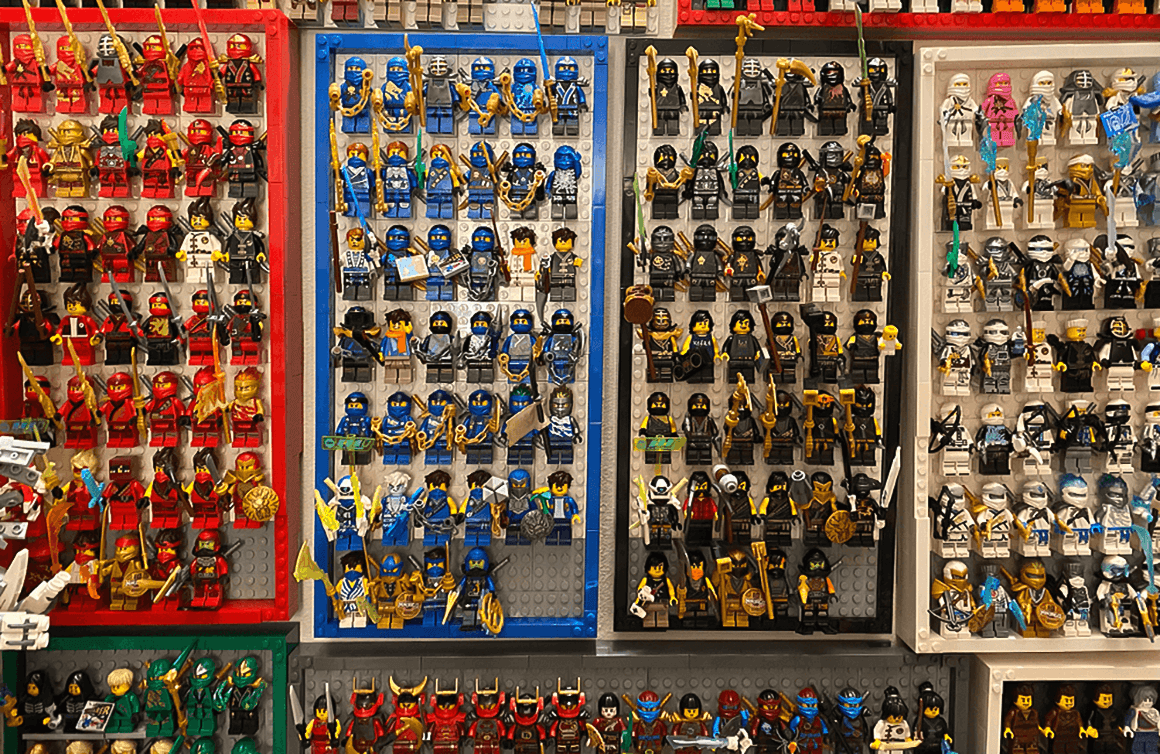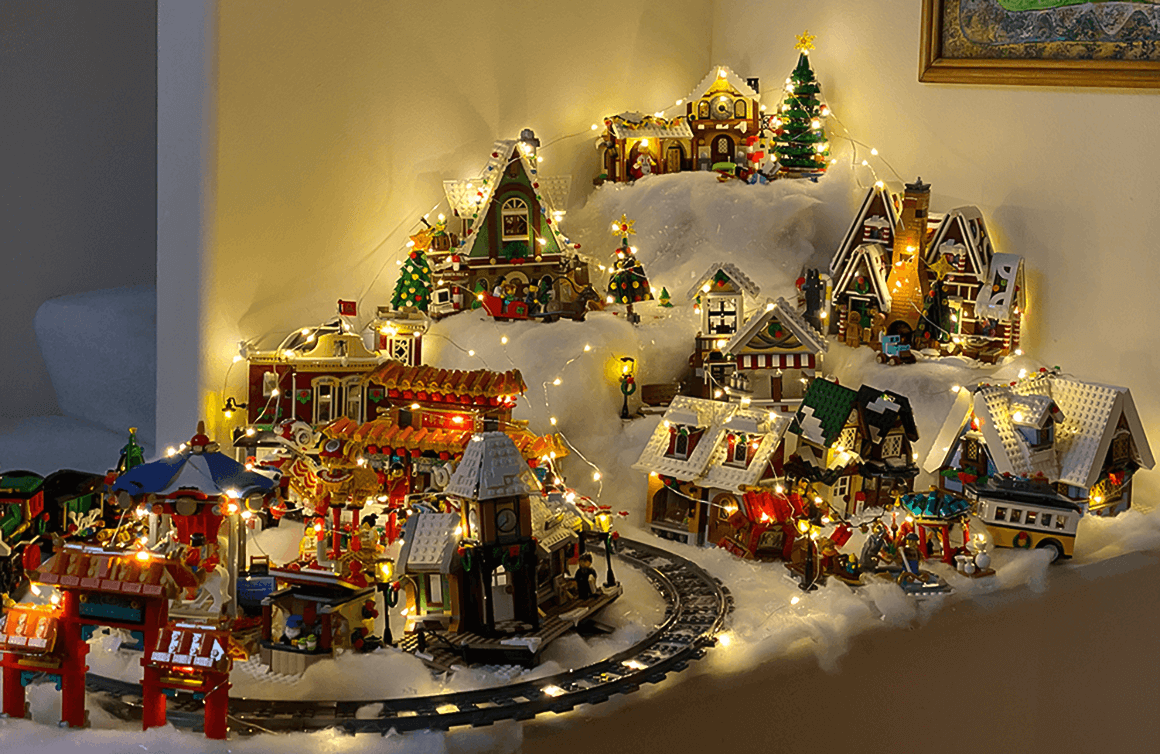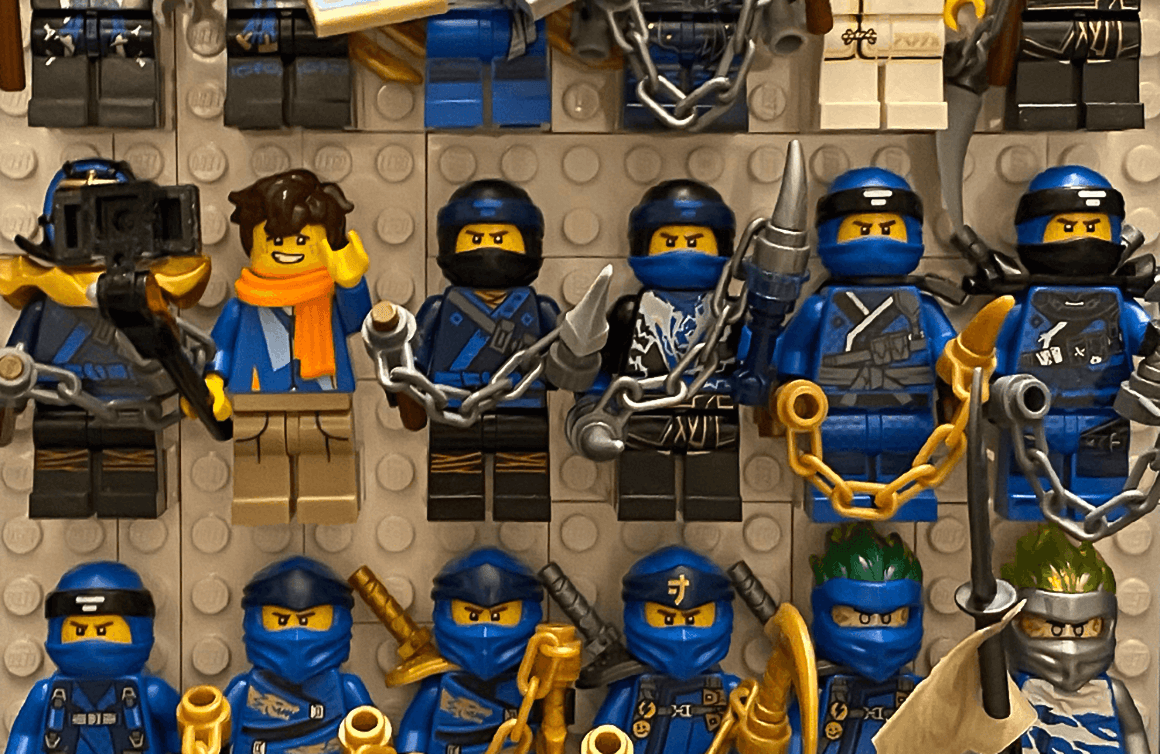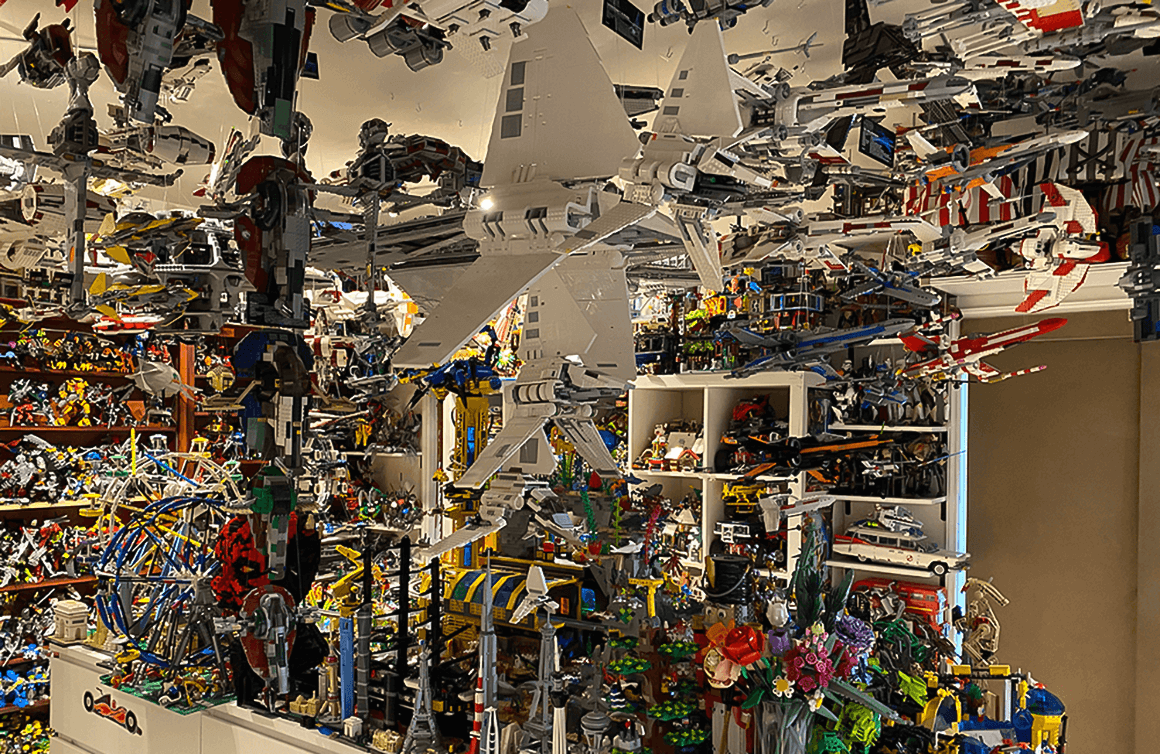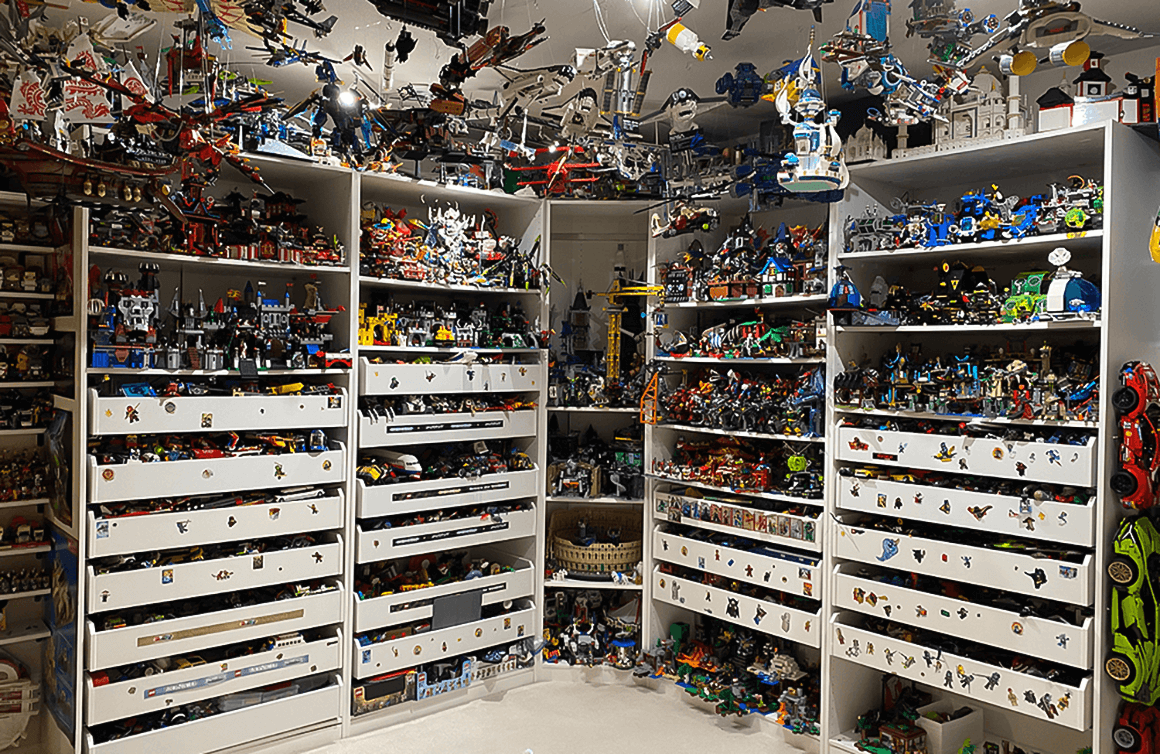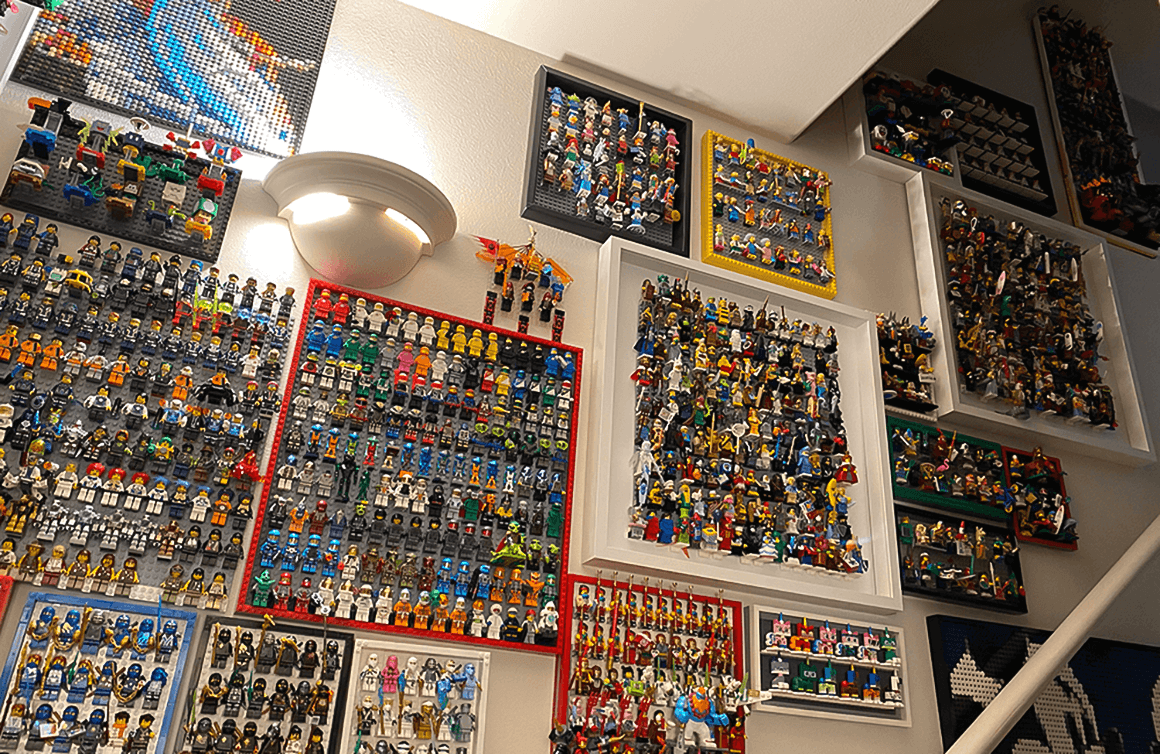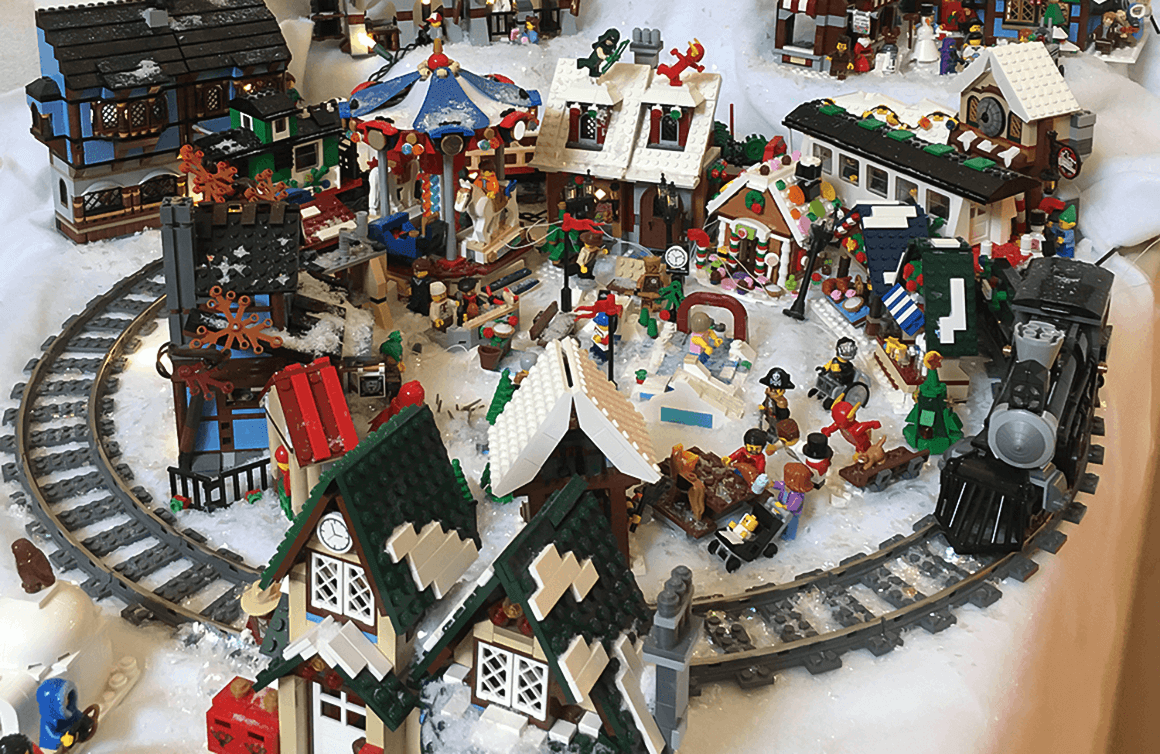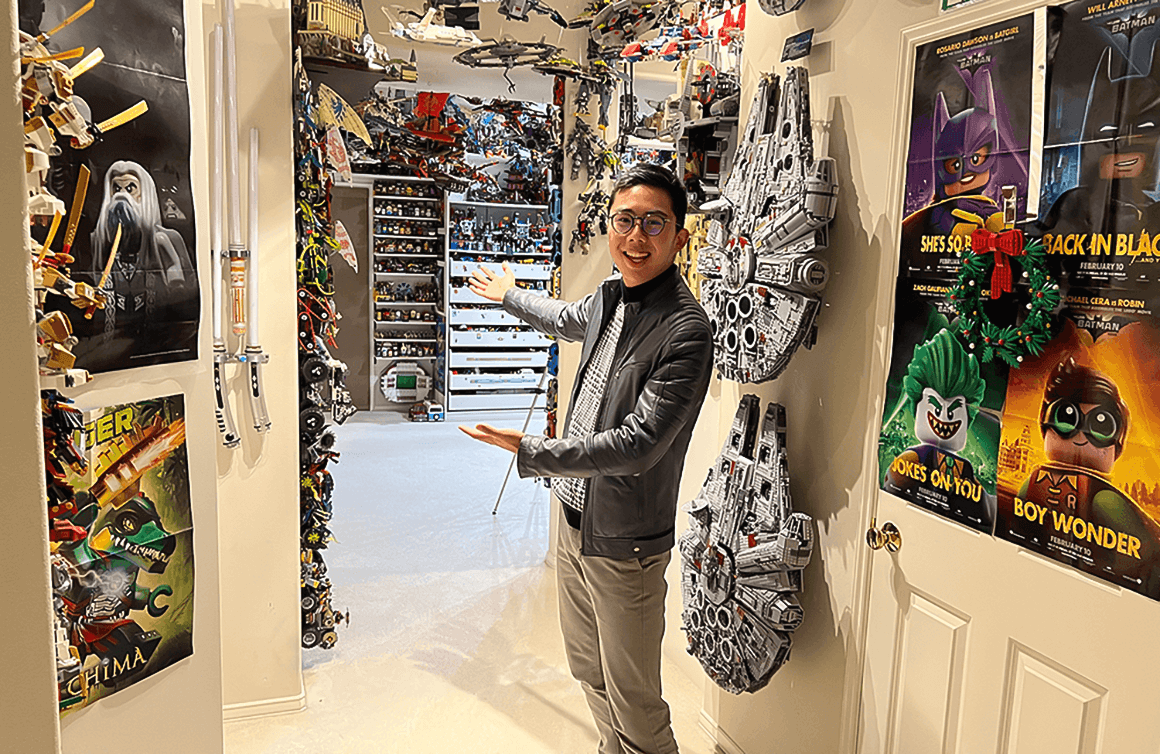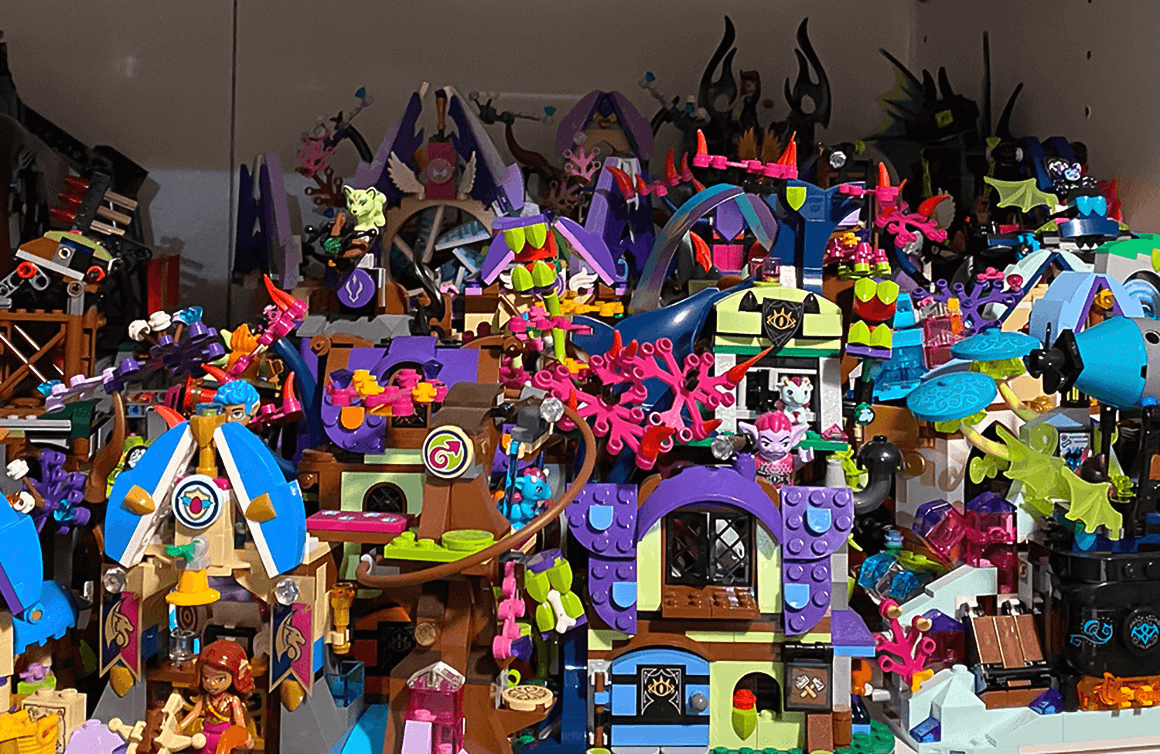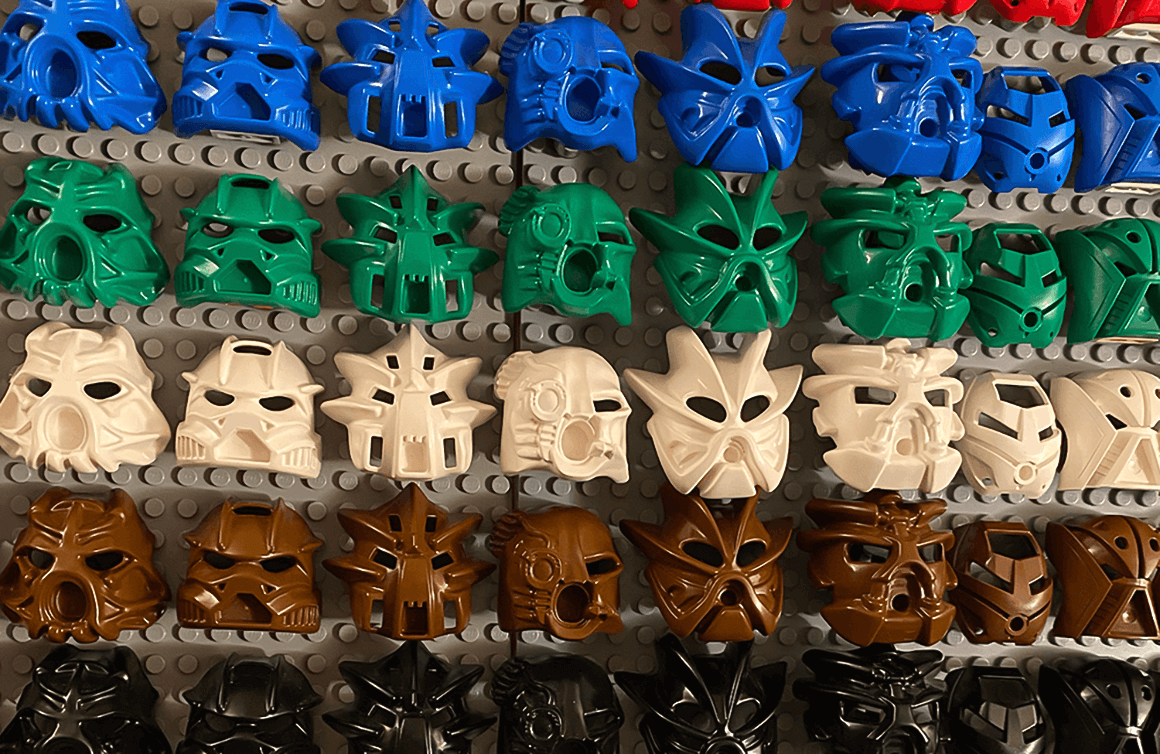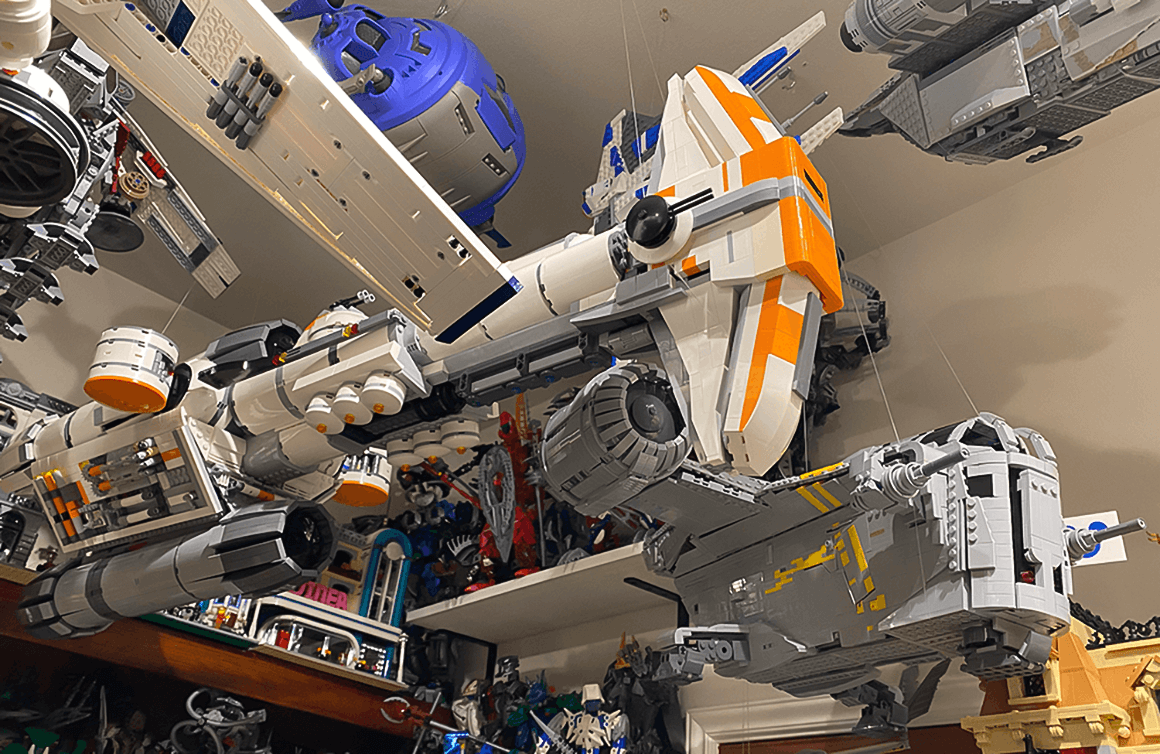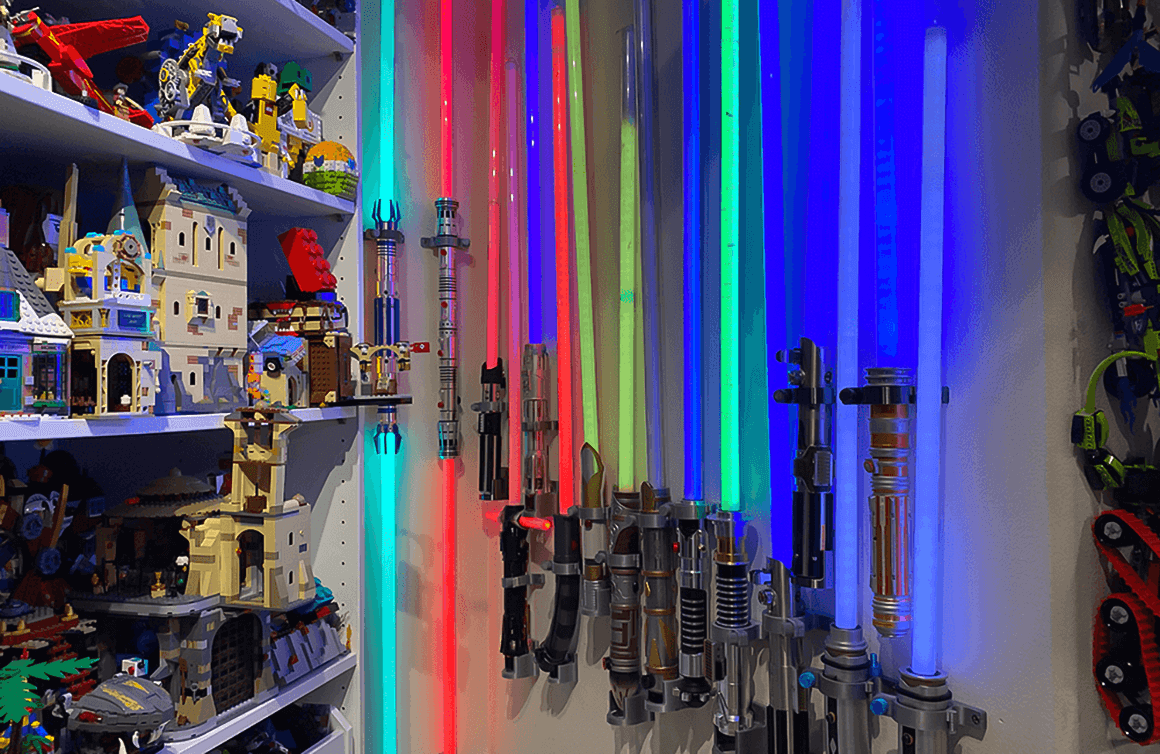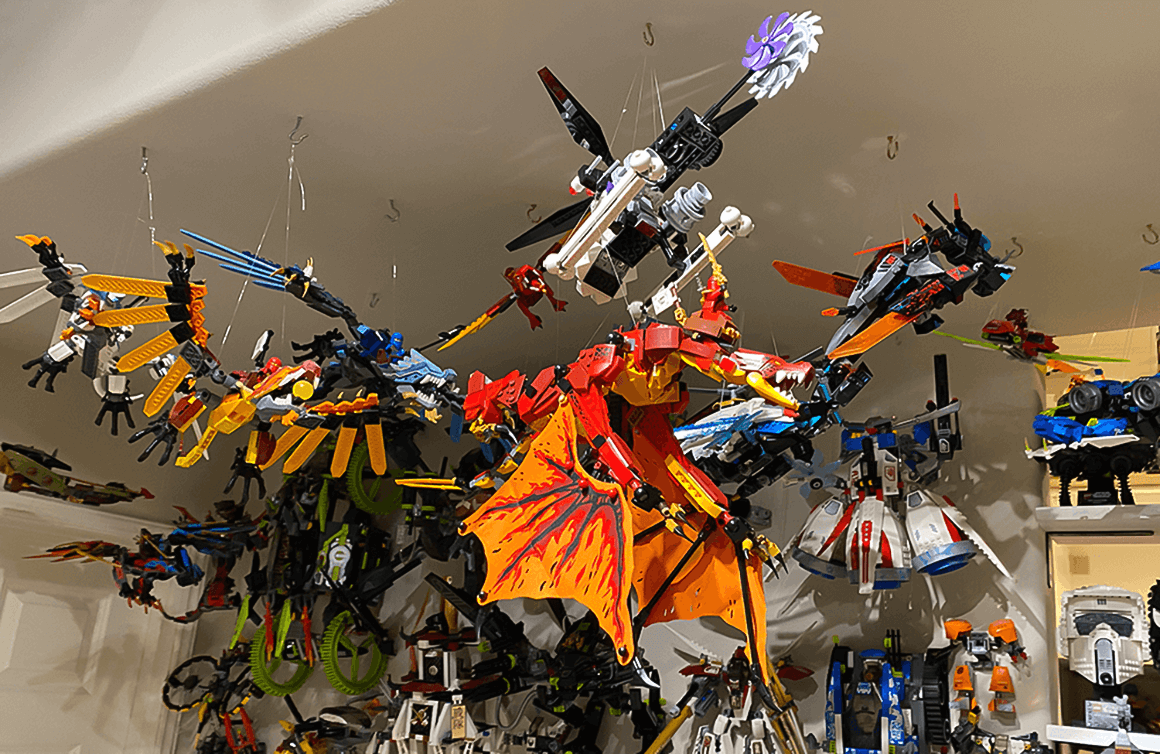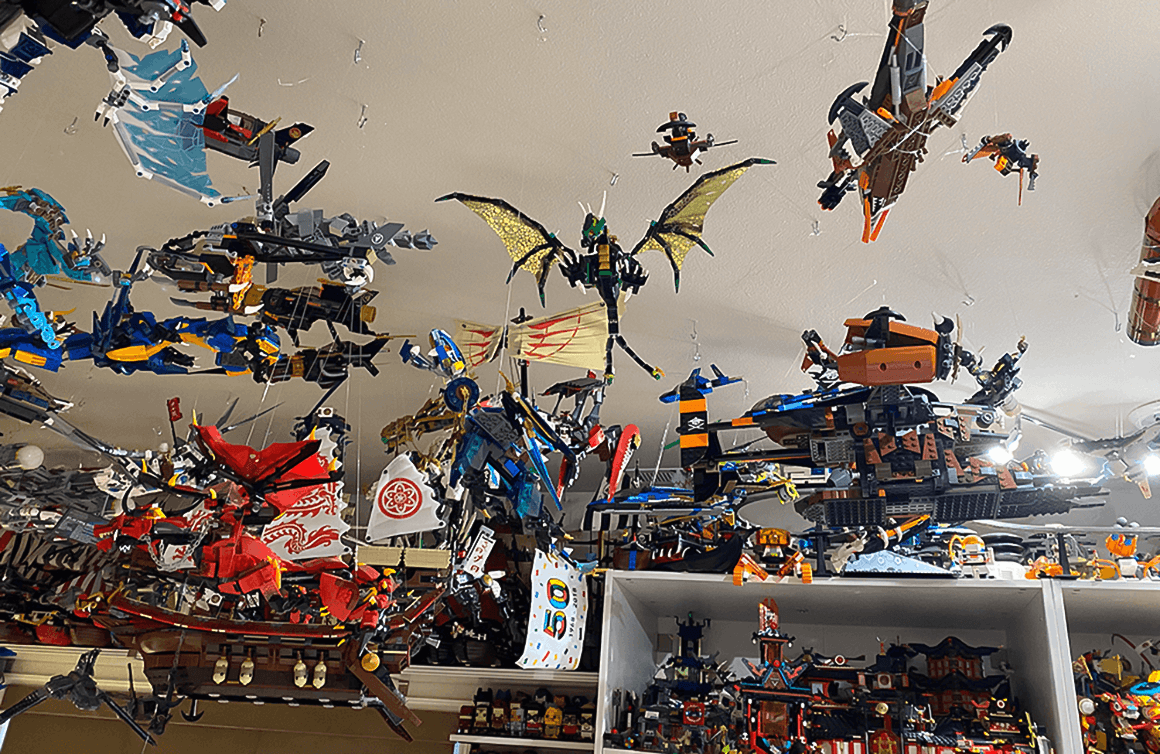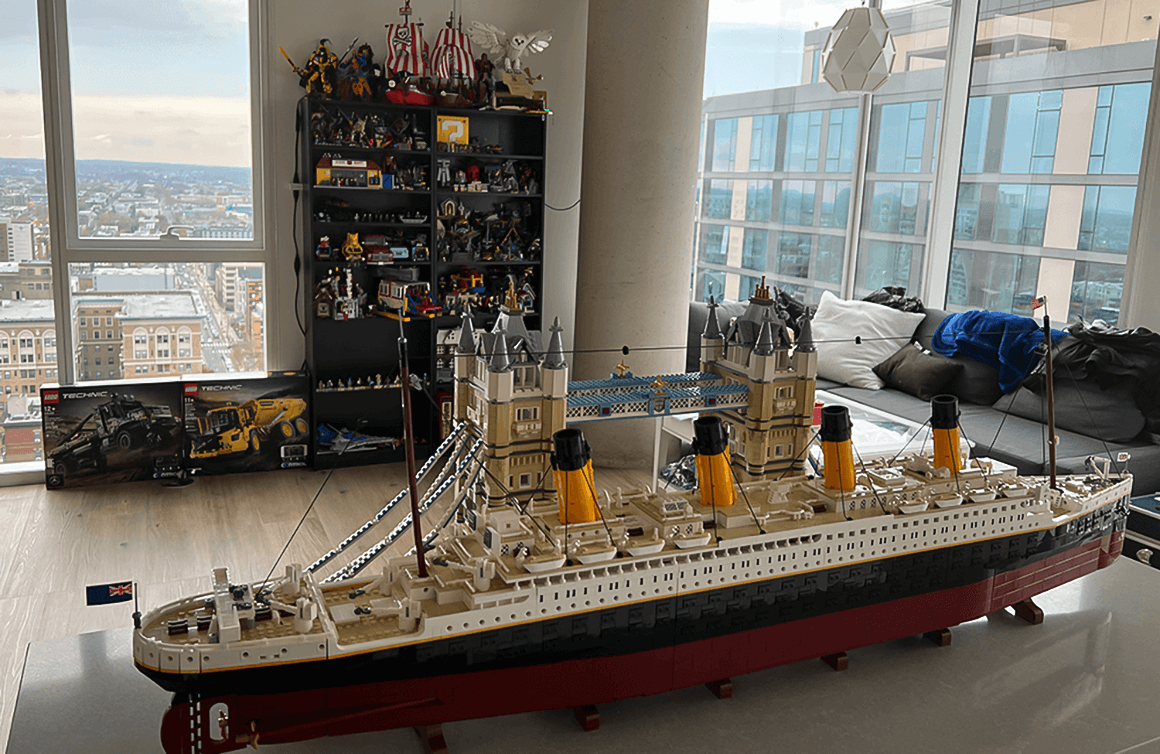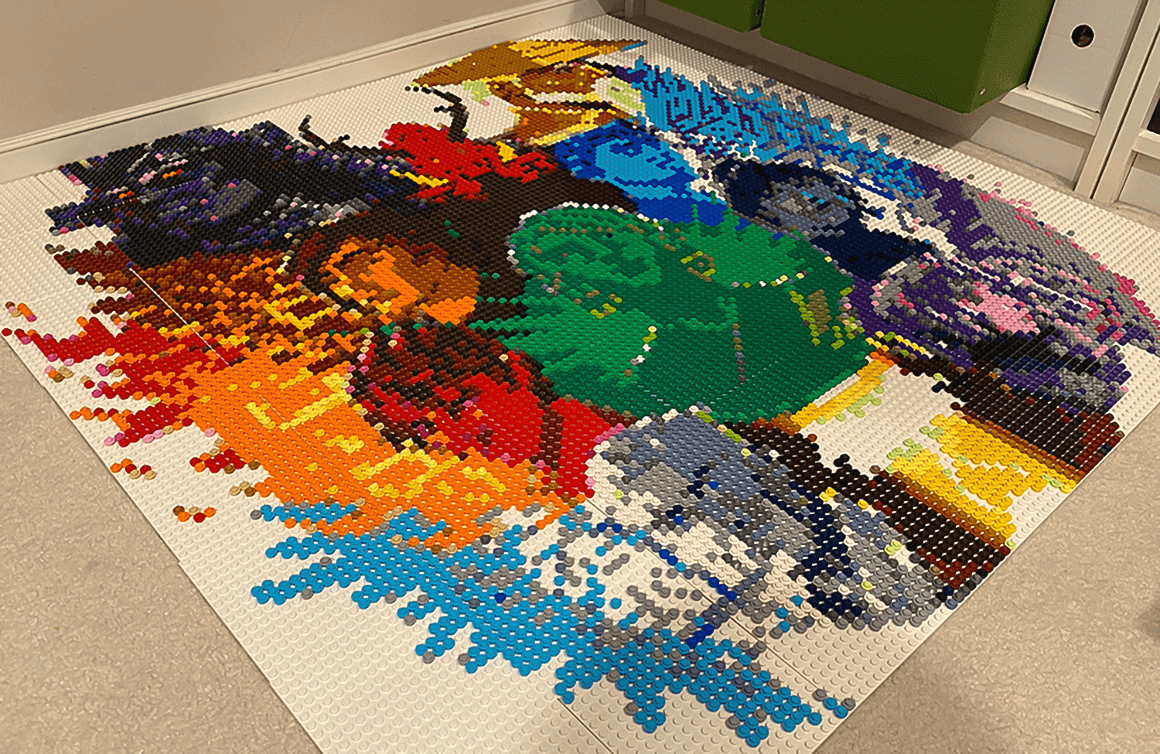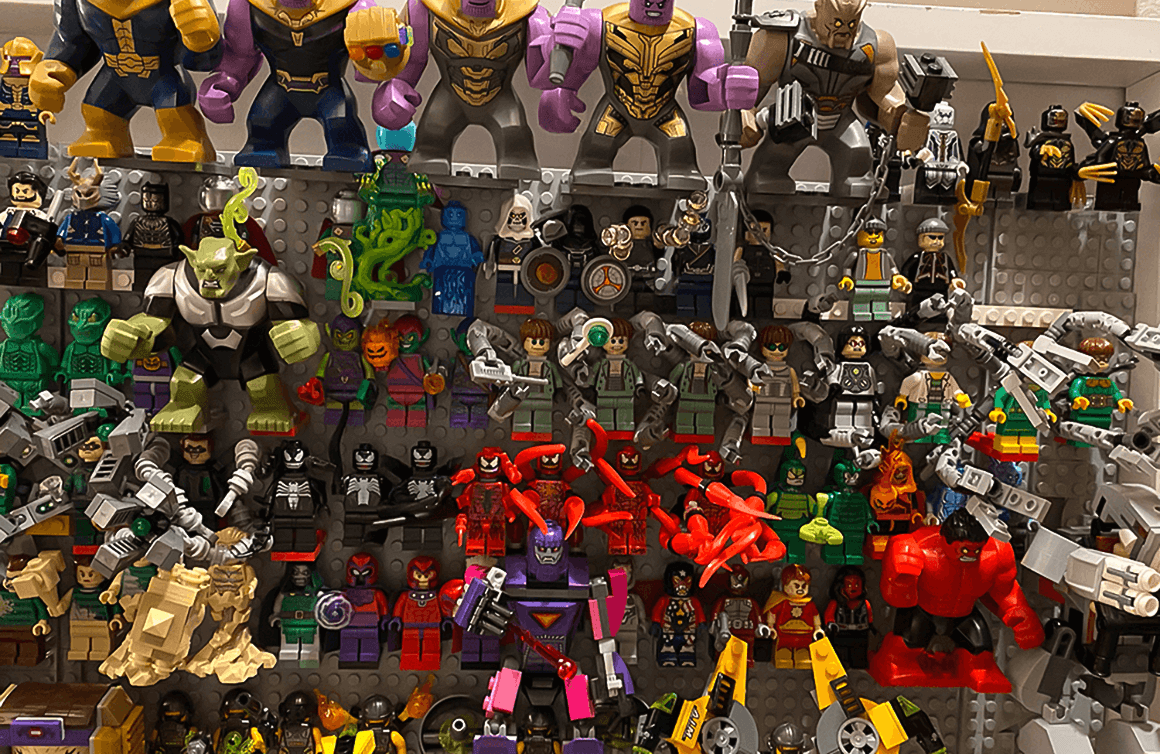How do you describe your collection?
I’m a big fan of collecting official LEGO sets and minifigures.
I enjoy sharing the history of the LEGO Group with people online and in person. I think it’s cool to show how LEGO has evolved. I really love to collect sets and the minifigures from the sets to showcase how the company has evolved as a building-block process and as a toy.
I collect almost every LEGO theme. It’s been my goal to collect different bits and pieces of all sorts of LEGO themes in general. My collection is broken up into minifigures and sets. I typically separate out the figures from the sets and put them in their own displays. It’s cool to see the evolution of the same character that LEGO has been making for years — how the print quality and details have changed and improved. I have logged 6840 unique sets. I think that’s a pretty accurate number. That’s not counting the loose parts and incomplete sets.
In terms of the minifigures, it’s a bit harder to know how many I have because I have a lot of loose ones. I’d estimate it’s close to 14,000 but it might be a bit more because that count only represents the figures that are from the specific sets that I have logged. It doesn’t count the random loose ones that I have on the wall or in bins and whatnot.
When and why did you start your collection?
I started collecting when I was around nine years old. I blame my cousin for this. He had a lot that was just stored because he outgrew his LEGO. He gave me all of it. That was really what introduced me to the world of LEGO building.
I enjoy collecting because LEGO truly feeds into all of my passions. It started off with moviemaking when I was really young — I was doing stop-action movies with LEGO. I’m currently studying a dual degree in business and electrical engineering. This combination of engineering and tinkering with my hands has been fueled by my passion for LEGO. I truly feel like collecting LEGO is a big part of who I am and my life and my passions.
How do you display and store your collection?
The minifigures are displayed at the entryway to my collection. As you walk deeper into the collection, that’s when you see the sets.
I started with a series of white shelving units from IKEA for my displays. I felt like it was a temporary solution but it’s not too expensive and works totally fine. I’ve had them for years. As my collection grew, I needed to figure out how to extend that, which is how I got inspired to hang stuff from the ceiling. I figured why not hang all the flying vehicles, spaceships, dragons, and whatnot from the ceiling to have a more engaging display but to save room on the ground as well.
I group things into specific themes. I have a wall of land vehicles dedicated to a particular LEGO Ninja theme, as an example. It’s a matter of trying to group things together by theme while being conscious of space and moving things around to see what fits the best. My dream would be to build a physical museum where I could house my collection in a much larger space — I’m already running out of space as it is.
For keeping track of my collection, I use the Brickset website. It’s a database of every single LEGO set that’s ever been released. The site is helpful because I can keep track of the sets I own and their condition. It also tracks the value of the sets so I can see which are the rarest and which have appreciated over time. I would highly recommend any LEGO collector to check out Brickset.
For buying and selling, I use LEGO BrickLink. I make most of my LEGO purchases here unless I’m buying new stuff from LEGO directly. BrickLink is useful because it also has its own database of every single LEGO set, minfig, part, and random items like gear plates, books, or bedding – anything LEGO-related is on BrickLink. It also defines the market of every LEGO set and allows you to know if you’re getting a good deal on something or if it’s overpriced. It’s different from eBay, as an example, where you aren’t really sure if you’re going to get the exact thing you’re looking for. BrickLink is a great resource to ensure you’re getting complete and accurate sets, even if they have been discontinued for years.
What do you consider to be the Holy Grail of your collection?
There are two items that I feel are really special to my collection. I obtained them this past month – maybe I’m just hyped to have recently obtained them. If you track the value of them, I would say that they’re probably the single most valuable pieces in my collection and surprisingly, they aren’t even LEGO sets.
One of the items is a LEGO minifigure. In 2013, LEGO released a Mr. Gold minifigure. It was originally released in a blind bag that sold for $4. Only 5000 of them were released, which makes them hard to find now. No matter how hard I searched in 2013, I was not able to find one. I was really surprised to be able to find one now — I’m very happy to have it.
The second item is a Bionicle mask. Bionicles were essentially a line of action figures that wore very ornate masks. For an inside tour of LEGO headquarters in Billund, Denmark, in 2015, they released an exclusive mold of one of the Bionicle masks in a color that was not found anywhere else. While I did not attend the inside tour in 2015, I was thankfully able to obtain that particular mask.
Those two items are probably the Holy Grails of my collection.
One aspect of LEGO collecting that I have not ventured into yet because I feel like it will be a rabbit hole is the San Diego Comic-Con exclusives. Three or four exclusive minifigures are released at the event every year. Oftentimes, these minifigures can resell for thousands if not tens of thousands of dollars, especially the older ones. I really like having things complete. If I start collecting a certain line or theme, I want every single piece. If I start to collect the San Diego Comic-Con exclusives, I’m going to want to own them all. I should probably wait until I have more funds before diving into that.
What advice would you give to someone interested in starting a LEGO collection?
Collect the things you personally enjoy. I’m not collecting to invest or resell to make money. It’s a lot more fun for me to collect the themes I’m interested in. Even if there’s something that is rare but not of interest to me, I am happy to pass it up in favour of something I actually do enjoy collecting.
Obviously, BrickLinks is a great resource. Being owned by LEGO, it’s a legitimate way to get discontinued sets — especially if you’re looking to obtain something that maybe you saw as a kid and weren’t able to buy when it first came out but now might have the income to do so.
Maybe this is more of a personal thing – I find it interesting and fun to share my collection with the world. I also think LEGO is a good educational tool in terms of teaching STEM skills. Every year I used to go to the Kangemi slums in Nairobi, Kenya to teach engineering classes to children. I brought over a ton of LEGO with me to teach them how to build the strongest bridges, the tallest towers, and the best race cars. The best aspect of LEGO collecting to me is sharing it with other people and seeing how people can learn from LEGO as an engineering medium. It’s just really fun.
I would highly recommend donating any loose bricks lying around or bringing them to a class or school somewhere. LEGO is a really good way to introduce engineering skills to kids.
See more of Chris’ LEGO collection on Instagram and his DuckBricks YouTube channel.
Drop us a line to let us know about your collection of vintage toys and/or games. We just may feature your collection!

